Idea by
Adalberto de Paula
https://www.instagram.com/depauladalberto/
Call for ideas 2020
Cell Housing
Cell Housing
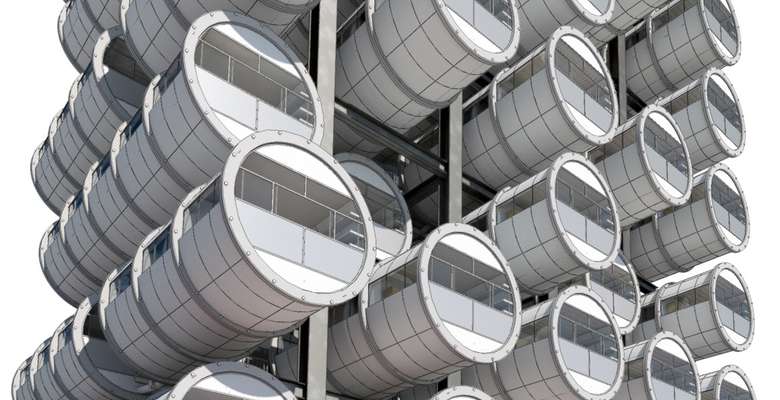
- Systemic changes
From the existing housing shortage in Brazil, more than 1.2 million families in precarious situation only in Sao Paulo, the proposed project thinks beyond meeting the 200 houses requested for the land of the previous Wilton Paes de Almeida Building, create a design solution that enables deployment in other areas and contexts, as well as flexibility for expansion. Thus, based on the Japanese architectural metabolism, the tower is verticalized from the fitting of cylindrical modules that form the housing units, which in turn shape the geometry of the building. As a living, ever-changing organism, the tower becomes dynamic reflecting the changing movements of people in the building and in the city.
As a starting point the contemporary ways of living, each apartment has at least 3 modules, with only one bedroom. Within the 33 floors, 14 floors have fixed apartments in this way and the another 15 floors have units that allow the addition of 3 more modules, totaling 6 modules.
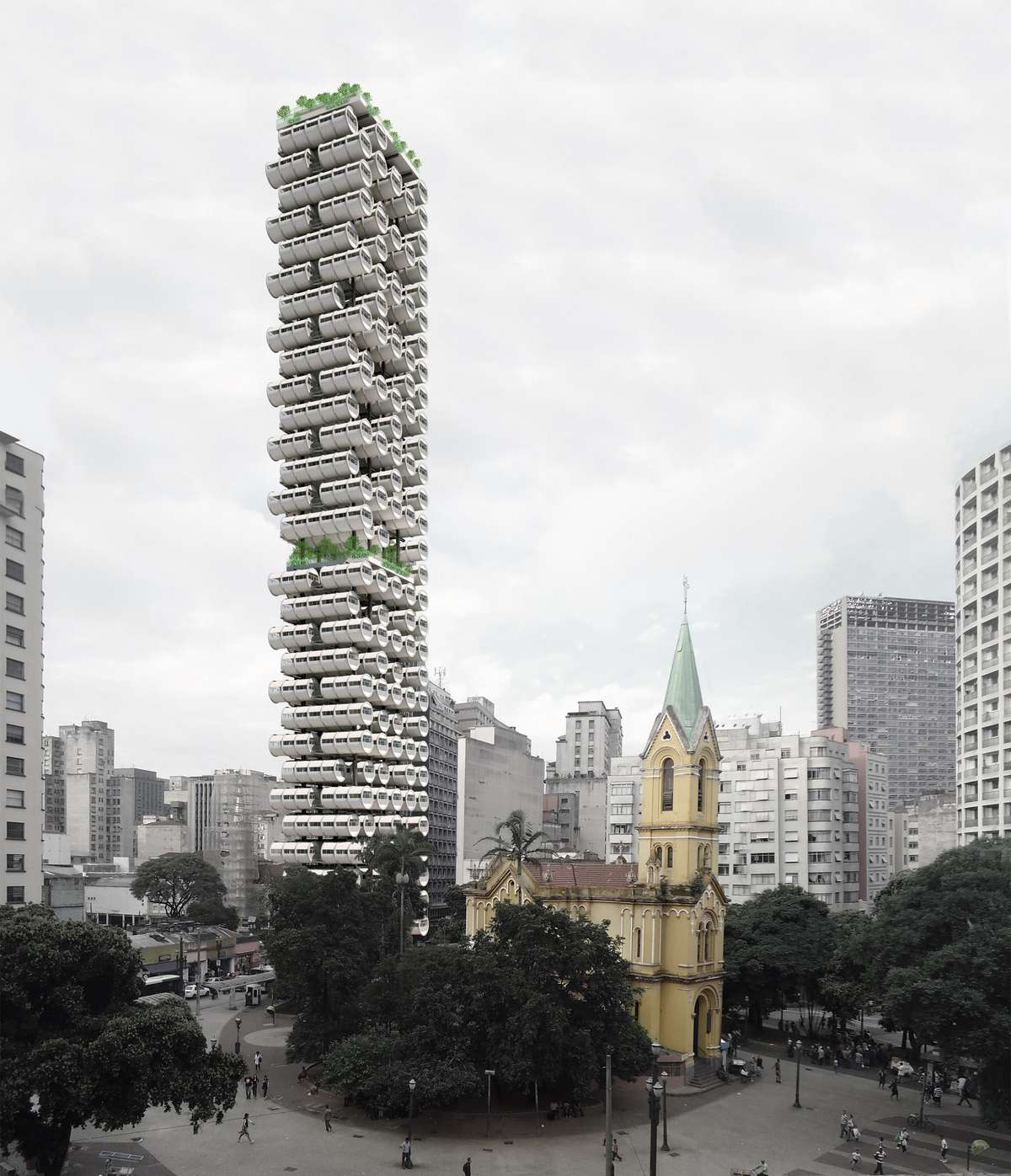
By prioritizing the flexible horizontal growth of the apartments and creating independent units, the tower reaches 177m in height because it needs 5.5m from floor to floor to allow the modules to move. In addition the building has 3 floors for collective use of residents plus the ground floor that is open to the community. Both in the middle of the tower and on the terrace, an urban garden serves residents as a source of organic food and an instrument of appropriation of the building.
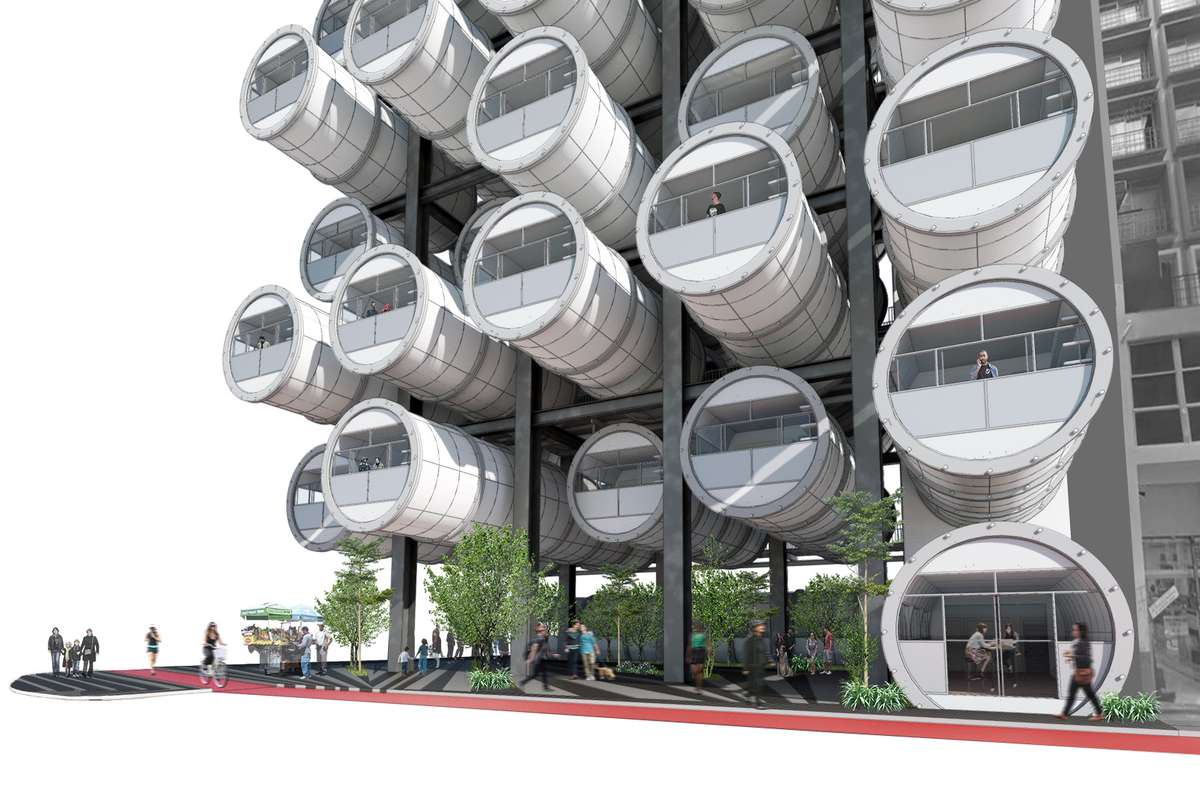
The green ground floor comes with the intention of creating a memory space for the history of the old building and integrating the residents with the neighborhood. This integration can take place on many levels, from resident children playing with each other, to parties and fairs where residents can sell their products to raise income for their families. Additionally, without digging the ground, there is a bike rack for 104 bicycles shared between residents and visitors.
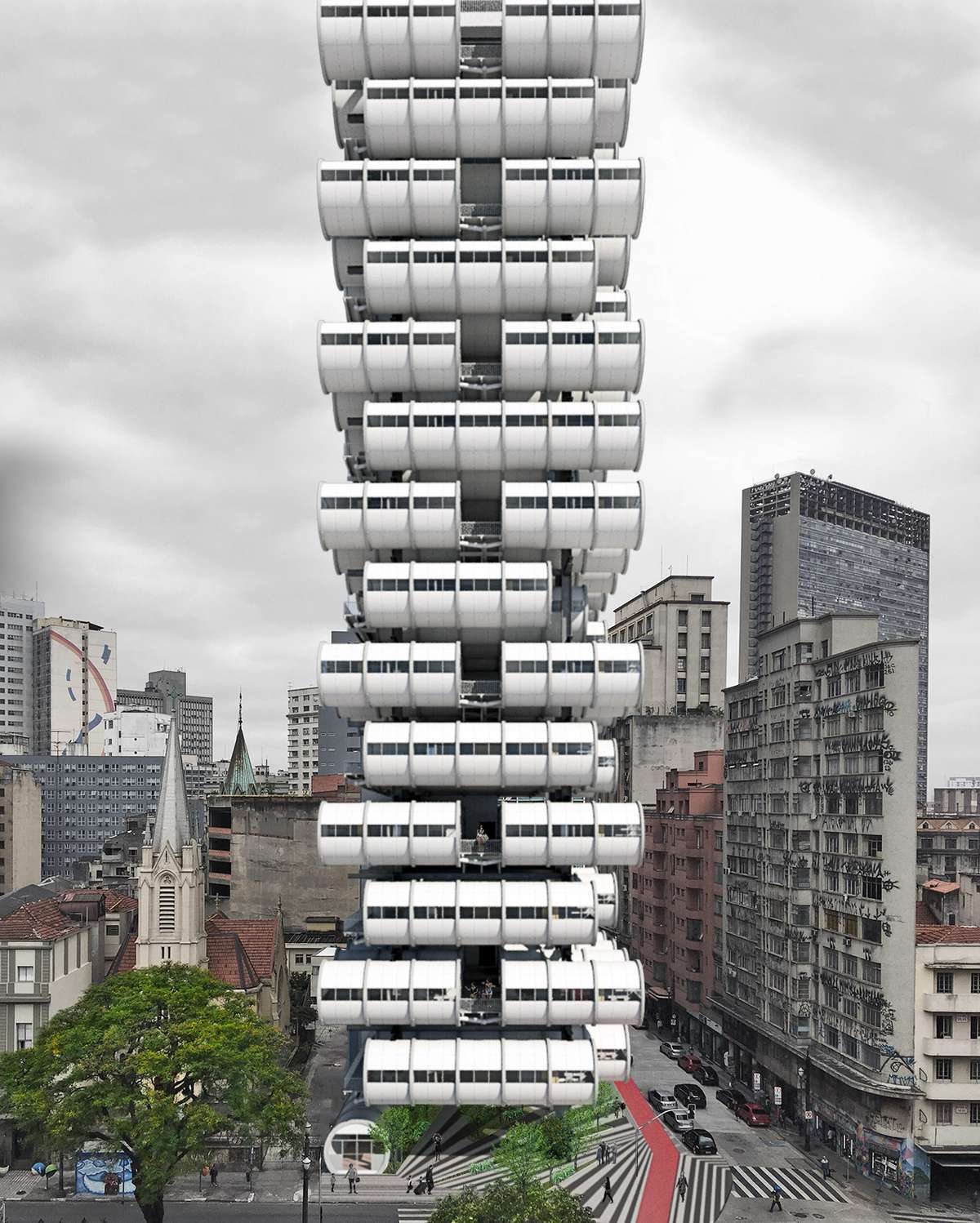
As the apartment is isolated and structurally independent from the other facilities of the building, the family can increase and decrease at any time. As well as imagining the idea reproduced in a program beyond the ground, in case of change, the whole apartment can be removed from the building and relocated in another similar structure or on the ground. This independence between apartments also aids in soundproofing between units and allows air to permeate throughout the building.
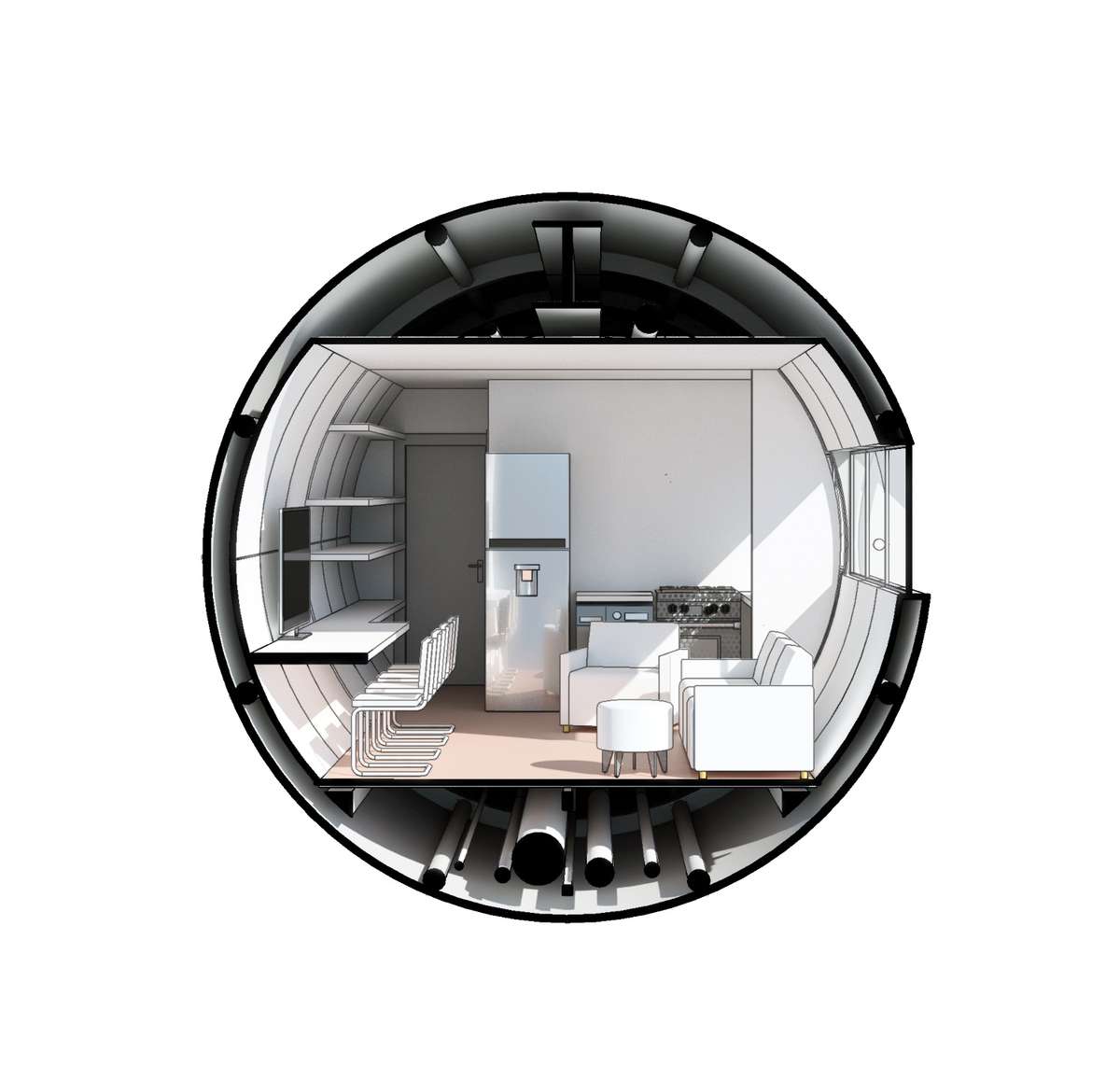
Based on the cells, each cylindrical module has a radius of 4m with a floor area of 9.3m² and a ceiling height of 2.6m. The remaining areas below the floor and above the ceiling are intended for infrastructure. The fitting of the modules is made by screws resulting in a free plan for to mold as needed. Outside the module is covered with sheet metal for easy bending production and inside the finishes are in wood for the lightness and comfort of the material.

As a layout option for the apartments, the kitchen, service area and circulation merge into a single multifunctional environment. Equipment such as a washing machine, refrigerator, stove, microwave and sink remain together and the table and cabinets for both the kitchen and the laundry area are along the circulation path taking advantage of the wall curvature and leaving the entire area of the room. Useful home. If this family adopted this layout, the shelves would be fitted with the module.
Cell Housing
Cell Housing

- Systemic changes
From the existing housing shortage in Brazil, more than 1.2 million families in precarious situation only in Sao Paulo, the proposed project thinks beyond meeting the 200 houses requested for the land of the previous Wilton Paes de Almeida Building, create a design solution that enables deployment in other areas and contexts, as well as flexibility for expansion. Thus, based on the Japanese architectural metabolism, the tower is verticalized from the fitting of cylindrical modules that form the housing units, which in turn shape the geometry of the building. As a living, ever-changing organism, the tower becomes dynamic reflecting the changing movements of people in the building and in the city.
As a starting point the contemporary ways of living, each apartment has at least 3 modules, with only one bedroom. Within the 33 floors, 14 floors have fixed apartments in this way and the another 15 floors have units that allow the addition of 3 more modules, totaling 6 modules.
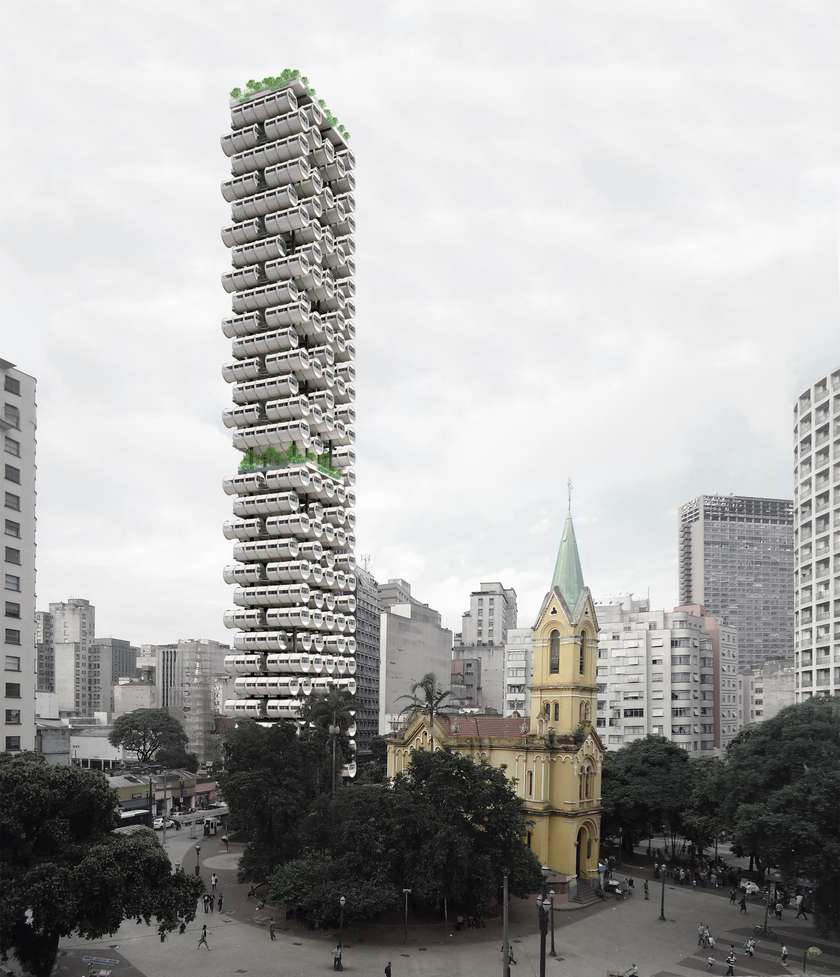
By prioritizing the flexible horizontal growth of the apartments and creating independent units, the tower reaches 177m in height because it needs 5.5m from floor to floor to allow the modules to move. In addition the building has 3 floors for collective use of residents plus the ground floor that is open to the community. Both in the middle of the tower and on the terrace, an urban garden serves residents as a source of organic food and an instrument of appropriation of the building.
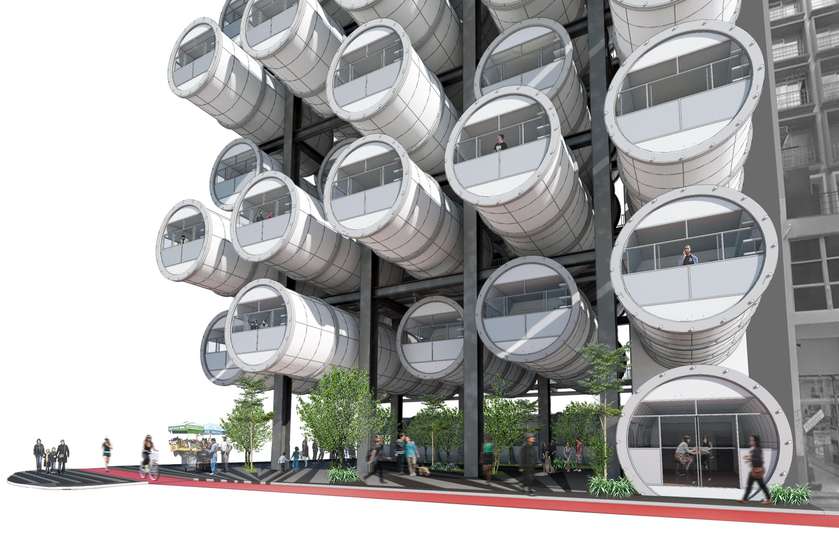
The green ground floor comes with the intention of creating a memory space for the history of the old building and integrating the residents with the neighborhood. This integration can take place on many levels, from resident children playing with each other, to parties and fairs where residents can sell their products to raise income for their families. Additionally, without digging the ground, there is a bike rack for 104 bicycles shared between residents and visitors.
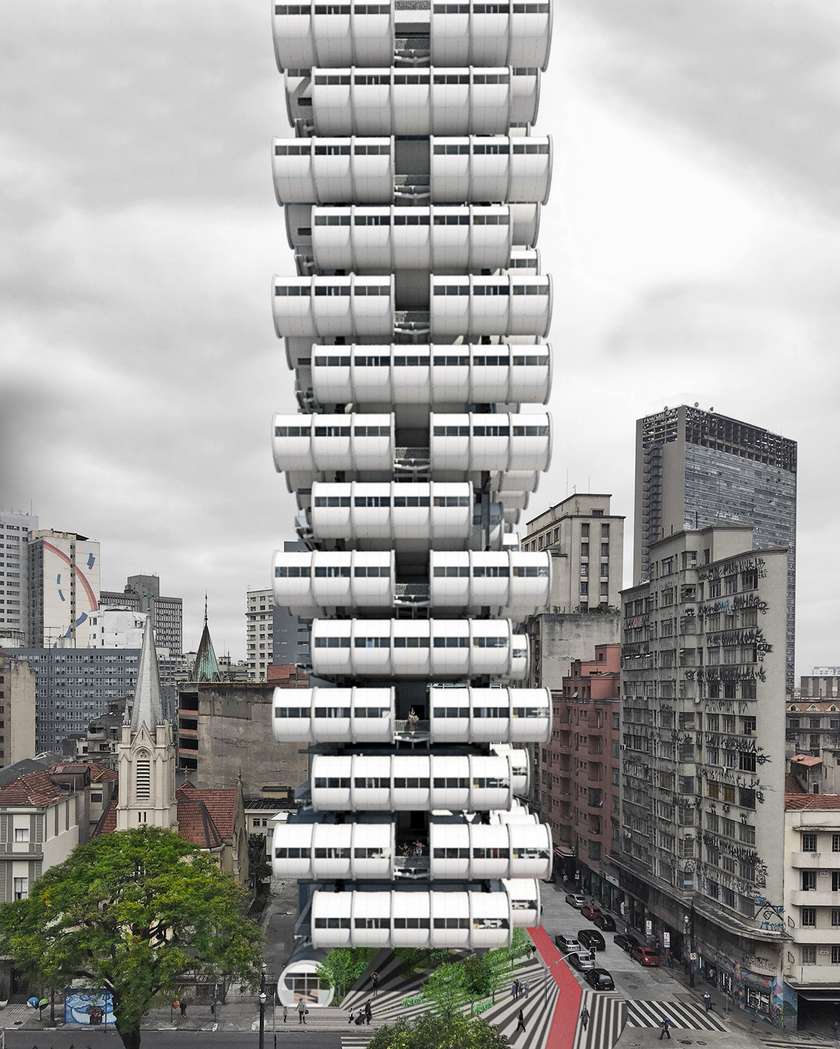
As the apartment is isolated and structurally independent from the other facilities of the building, the family can increase and decrease at any time. As well as imagining the idea reproduced in a program beyond the ground, in case of change, the whole apartment can be removed from the building and relocated in another similar structure or on the ground. This independence between apartments also aids in soundproofing between units and allows air to permeate throughout the building.
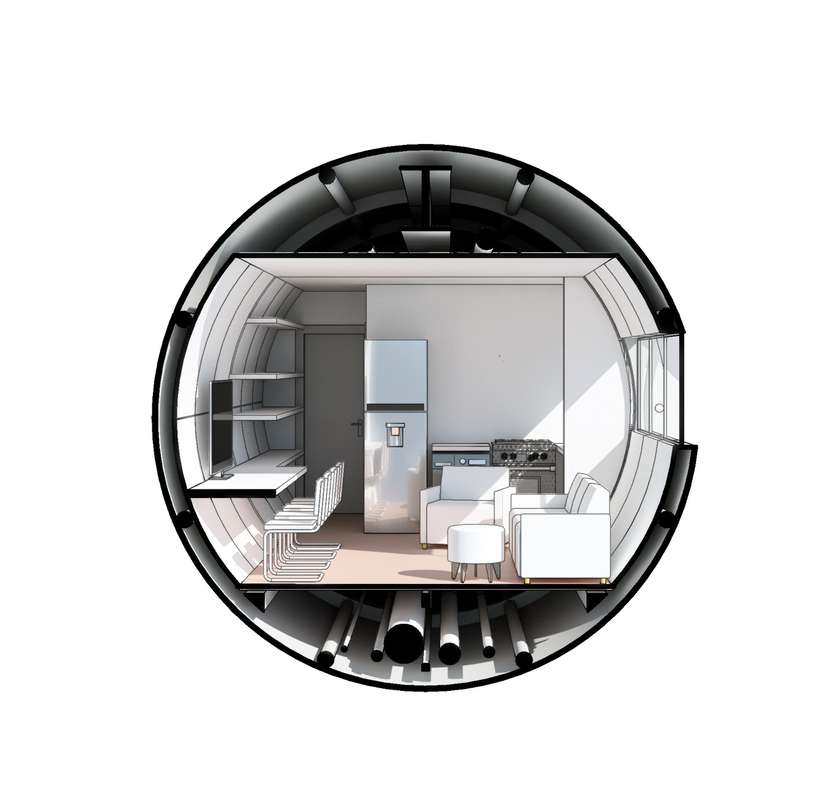
Based on the cells, each cylindrical module has a radius of 4m with a floor area of 9.3m² and a ceiling height of 2.6m. The remaining areas below the floor and above the ceiling are intended for infrastructure. The fitting of the modules is made by screws resulting in a free plan for to mold as needed. Outside the module is covered with sheet metal for easy bending production and inside the finishes are in wood for the lightness and comfort of the material.
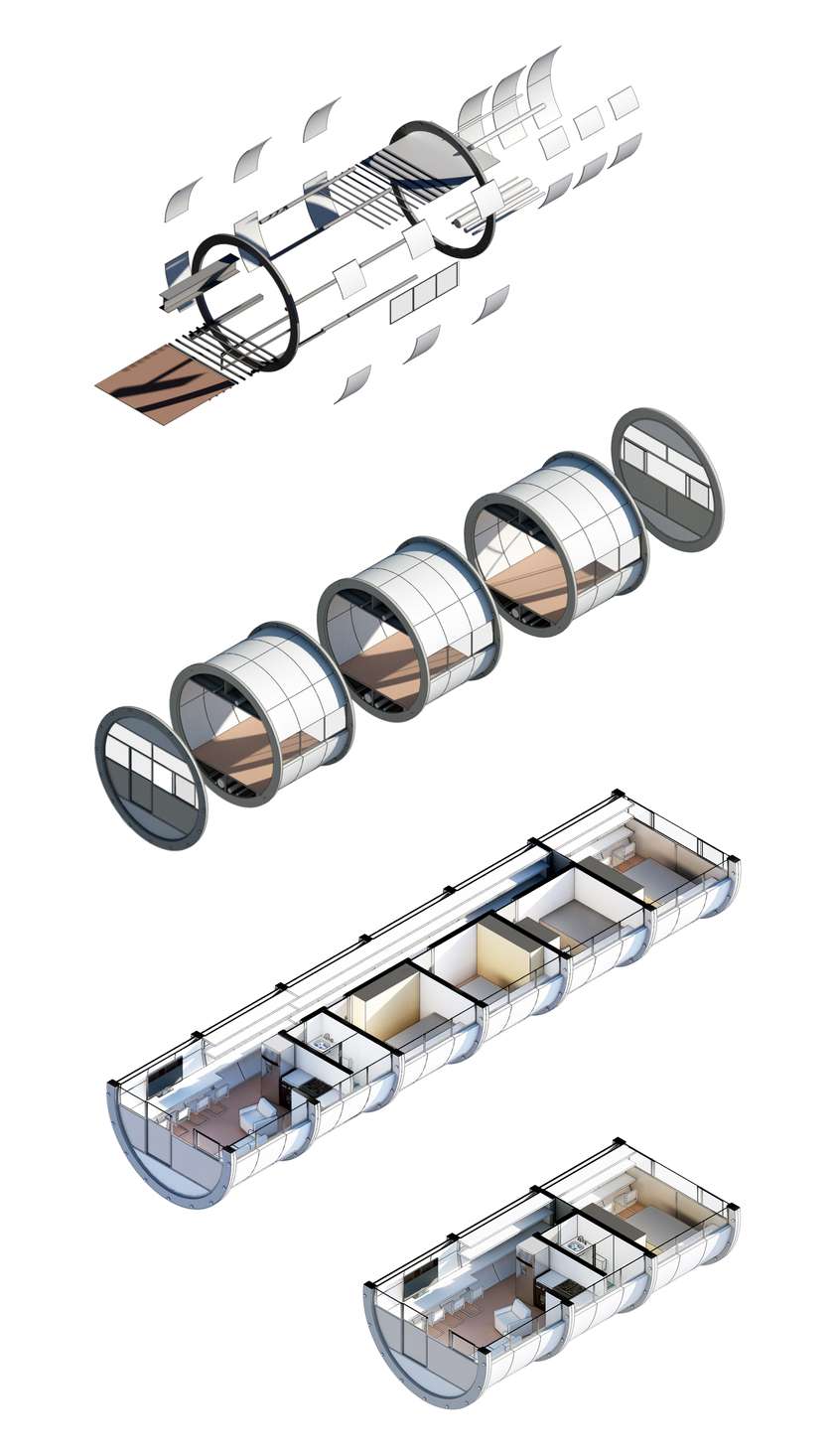
As a layout option for the apartments, the kitchen, service area and circulation merge into a single multifunctional environment. Equipment such as a washing machine, refrigerator, stove, microwave and sink remain together and the table and cabinets for both the kitchen and the laundry area are along the circulation path taking advantage of the wall curvature and leaving the entire area of the room. Useful home. If this family adopted this layout, the shelves would be fitted with the module.